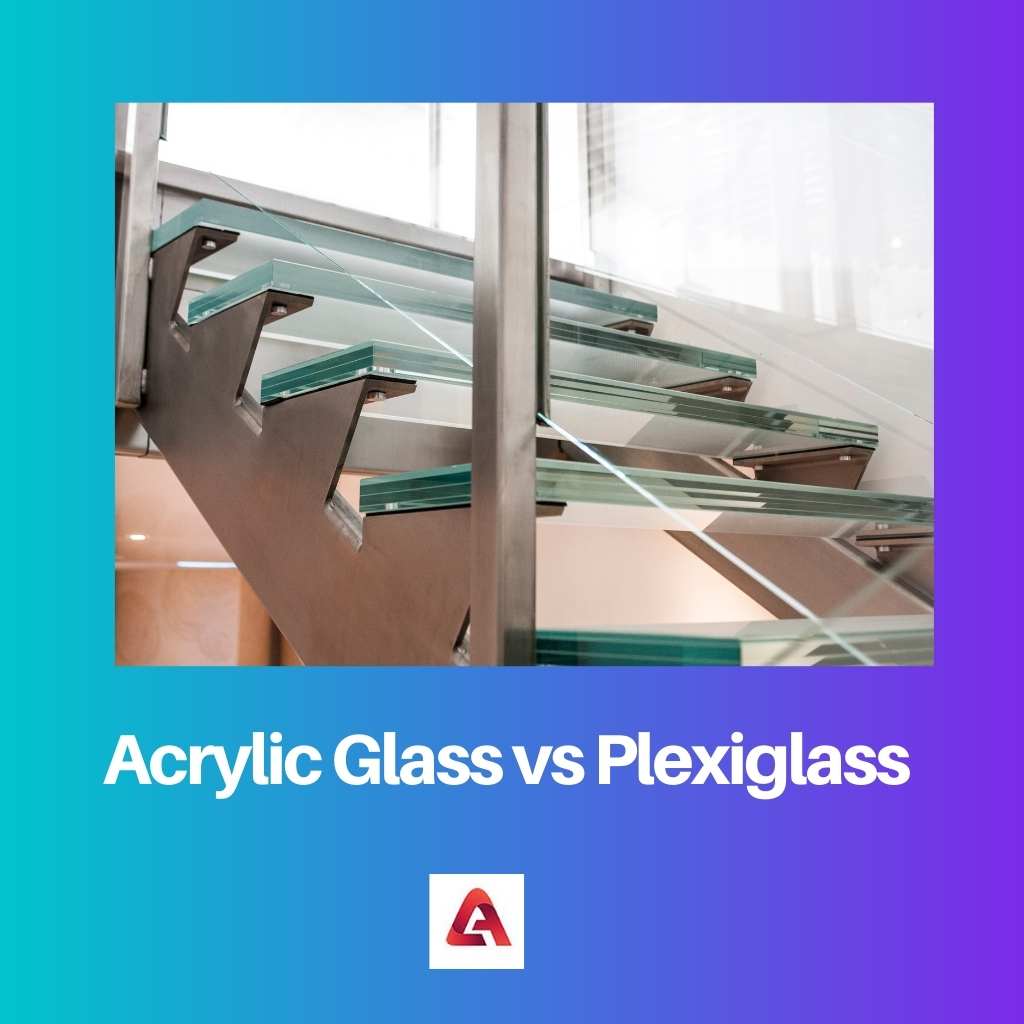Engineered plastics have changed the dynamics of various raw materials. It has become an integral part of various applications due to its high strength rigidity chemical properties, fire safety, and good self-lubrication.
The two most common types of engineered plastics available in the market are acrylic glass and plexiglass.
Key Takeaways
- Acrylic glass is more impact-resistant and lighter than traditional glass, making it a popular alternative for various applications.
- Plexiglass is a specific brand of acrylic glass known for its high-quality and durability, used in the construction and automotive industries.
- Both materials offer excellent optical clarity and weather resistance and can be easily cut, shaped, and fabricated, making them versatile in numerous industries.
Acrylic Glass vs Plexiglass
The difference between acrylic glass and plexiglass is that acrylic glass is a material while plexiglass is a brand name. The manufacturing process of acrylic glass is more complex and requires a long time while the manufacturing process of plexiglass is less complex comparatively and is completed in a short period.

The constituent ingredients of acrylic glass are mainly the compound poly(methyl methacrylate) or in short, is known as PMMA. Acrylic glass is a type of thermoplastic.
The material has various characteristics like heat-resistant, corrosion-resistant, chemical-resistant, and insulators of electrical and thermal.
On the other hand, the constituent ingredients of plexiglass are sulphuric acid, acetone, hydrogen cyanide, and ethanol. The introduction of the compound was by Rohm and Hass Company in the year 1933 under the trademark name of Plexiglas.
Comparison Table
| Parameters of Comparison | Acrylic Glass | Plexiglass |
|---|---|---|
| Type | Acrylic glass mainly refers to a type of material or compound | Plexiglass mainly refers to a manufacturing company |
| Chemical Constitution | Poly(methyl methacrylate) or PMMA | Synthetic polymer of methyl methacrylate |
| Year of production | 1928 | 1933 |
| Heat resistance and durability | High | Comparatively low |
| Manufacturing cost | Higher cost | Lower cost |
What is Acrylic Glass?
Acrylic Glass is a type of poly(methyl methacrylate) or commonly shortened as PMMA. It is a group of materials that are termed engineering plastics. Acrylic glass is a type of thermoplastic that is transparent.
The usage of acrylic glass is in the form of a sheet. It acts as an alternative to glass. The application of acrylic glass is seen in various places like casting resins, medical devices, coatings, inks, and other places.
Acrylic glass is much stronger than other elements. It even shatters resistant and erosion resistant which is not found in materials like glass.
The compound also has other characteristics like impact-resistant scratch resistant and high durability. The refractive index of the material is 1.4905 at 589.3 nm.
The origin of acrylic glass was first in the year 1928. The introduction of acrylic glass in the market was by Rohm and Hass Company.
The initial usage of the material was during World War 2 for installation in various products like turrets, windows, and canopies. The nature of acrylic glass is non-crystalline.
The selling and distribution of the acrylic glass material is done in various thicknesses and opacities. The materials are also found in forms like tubes and rods.
The density of the material is 1.18 grams per cubic centimeter. The melting point is marked at 160 °C. Acrylic glass has a distinct magnetic susceptibility at -9. 06 × 10-6.
What is Plexiglass?
Plexiglass is a type of clear acrylic sheet. The usage of the “plexiglass” term is a generic term that can refer to various types of products that can be manufactured under a similar name.
Plexiglass is a brand that has become so popular that the compound was also termed under the same name. The production of the material is within a chemical certitude which enhances the practical features of the material.
The main constituent materials that are used for the production of plexiglass are sulphuric acid, acetone, hydrogen cyanide, and ethanol.
Though the ingredient materials are not safe, the output result obtained from the materials is completely safe and harmless. The manufacturing process of plexiglass is through cell casting.
Plexiglass has the characteristics of being flammable. But if the material burns, there is no formation of any harmful substances at all if it burns.
The residual products which are produced in the end are carbon dioxide and water. The characteristic strength of plexiglass makes its way into large aquariums and pools of the zoos.
The thickness in these places is up to 30 centimeters. If any ordinary glass was used in place of plexiglass, the transparency would be very less and glazing would be quite heavy.
Plexiglass is a substance that is not heat-resistant. Hence the material cannot be used for applications for safety purposes. Because of the weight of plexiglass, the strength is reduced.
This also relatively lowers the price of the compound. The usage of this material is for glazing large surfaces, like in the wind and noise screens.

Main Differences Between Acrylic Glass and Plexiglass
- Acrylic glass is more durable while plexiglass is comparatively less durable.
- Acrylic glass is ideal for customers who are ready to splurge some extra dollars while plexiglass is ideal for customers who are on a tight budget.
- The processing of acrylic glass requires more time and is labor extensive while the processing of plexiglass is quicker with less requirement of labor.
- Acrylic glass is manufactured by two processes that are cell casting and extrusion while plexiglass is manufactured only through cell casting.
- Acrylic glass is not the name of any manufacturing company while plexiglass is the name of a manufacturing company.

- http://www.restar.kr/dcfacidnak/ojqy-acrylic-glass-cnmanufactures-32736784.html
- https://core.ac.uk/download/pdf/44234142.pdf
